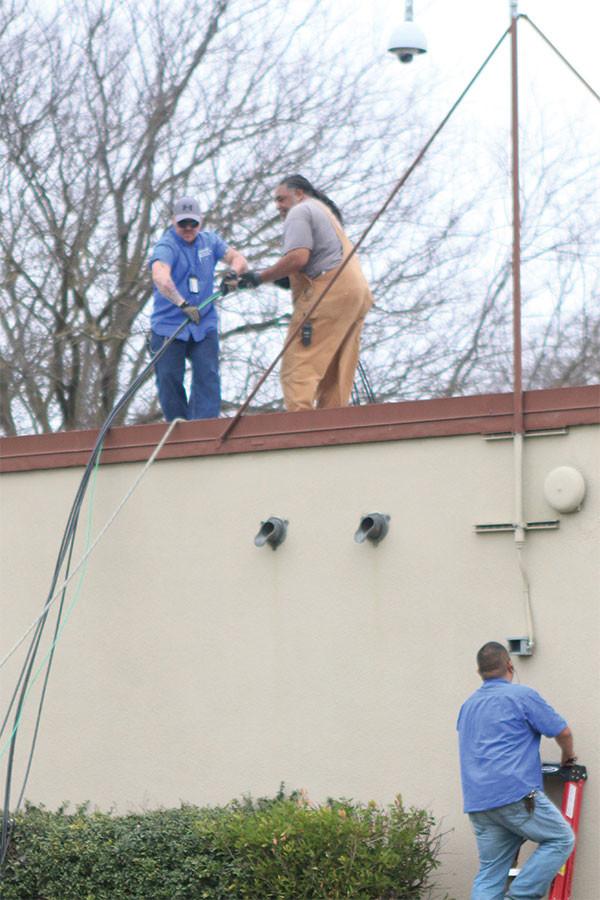Security being tested
Fall break set a chain reaction for copper theft on campus this year. Since the original theft back in October, two recent break-ins have left instructional days a mess for teachers and students and raised questions about security in general.
During the fall break, copper wire from the electrical system was stolen from the cafeteria and H-wing classrooms, including the Campus Cafe. On Thursday, Feb. 12, copper wire was stolen from the A-wing, and a week later from the C-wing and M-wing. Preparations were made to other areas of the campus as if the thieves were planning to return.
In hopes of catching the trespassers, administration reviewed security footage but were left hopeless when cameras described as “low budget” by Principal Andre Phillips revealed nothing more than shadows of figures. “We can see them moving around,” he said. “All we see is figures, we can’t make out any faces.”
Phillips recalls incidents from prior years including vandals covering the school in toilet paper and another involving the swimming pool. “We don’t have night security,” Phillips said. “Who would stand out here at midnight without a weapon?… Because that is what we would need but can’t have because of policy.”
Various police reports were filed after the incidents occurred, serving as the only thing that can really be done. “Police patrol now come and shine the lights in the roof, so I think that will help,” Phillips said.
Averaging about $1.40 a pound, copper wire is the moneymaker in recycling. The most common occurrence is that the copper wire is exchanged for cash at recycling centers in another county in order to avoid questioning of the wire’s origin.
“It happens all the time, everywhere, not just Stagg,” district electrician John Buck said.
However, in some cases, the cameras are able to immediately identify a suspect by clothing items.
While teachers and other students were relocated to rooms with electricity, students in M-1 remained in the dark. Although ASC supervisor Robert Torres was filling in as an assistant principal, he says that “it was cold and dark, for him (the sub for ASC) it was inconvenient.” The same rules applied, but when entering, students had to sign in on paper instead of checking in on the computer.
“When we have a discrepancy, we look at (the security cameras) to the time of day and see every image where a person shows up,” Phillips said.
Since the cameras are only checked upon notification of misbehavior, students found wandering aimlessly around the halls from a few of the same classrooms receive no punishment unless caught by campus security monitors.
The theft proved to be inconvenient when the assistant principal secretary Tyresha Sasaki was immobile for the day and could not access files and “constantly had to go back and forth” to access her system. She and Torres shared an office during the repair work.
Students are no strangers to the uniform exiting the black and white police car that is parked daily in the front of the F-wing. During the day, there are district police on campus, many whom students know by name and who scold students for doing inappropriate things.
With the lack of manpower, security cameras have “been a positive,” according to assistant principal Linda Roberts. “We’ve been able to identify property damage during and after school.”
She did acknowledge that “it makes it tougher because we didn’t have lights available.”
Now that the district has made the decision to leave the lights on 24/7 Roberts hopes that it helps to deter theft and enhance the visibility of the fairly new security cameras.






